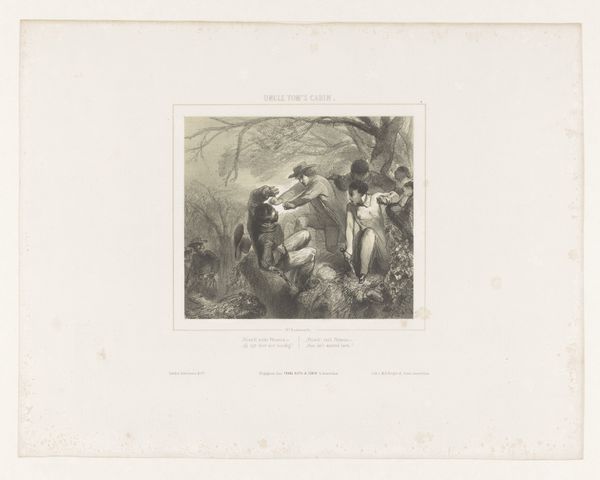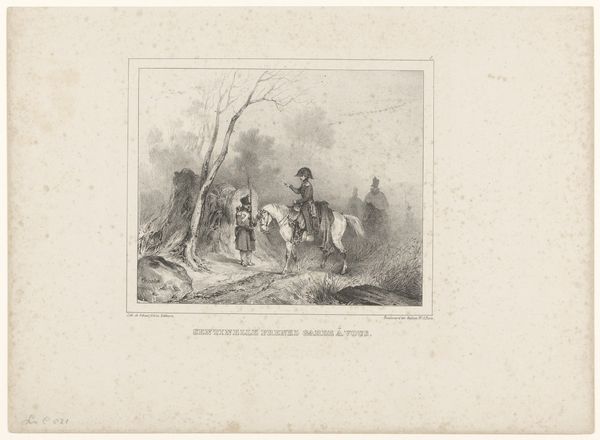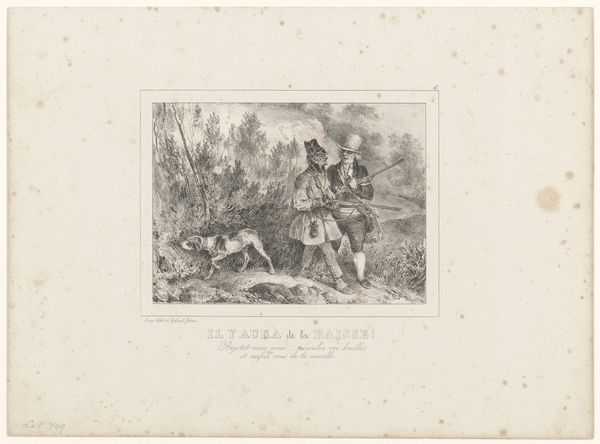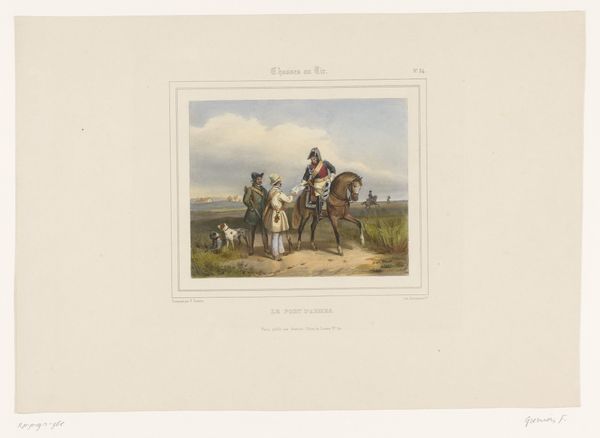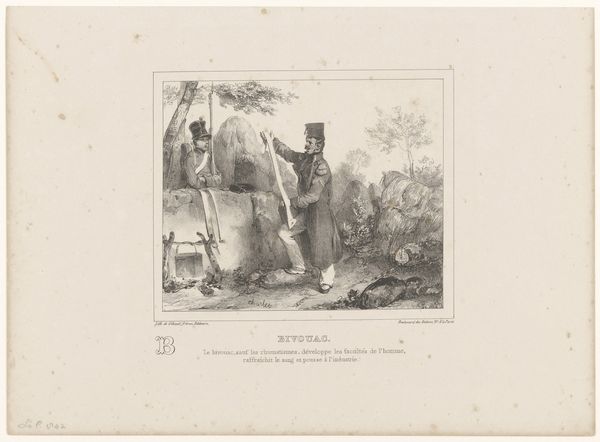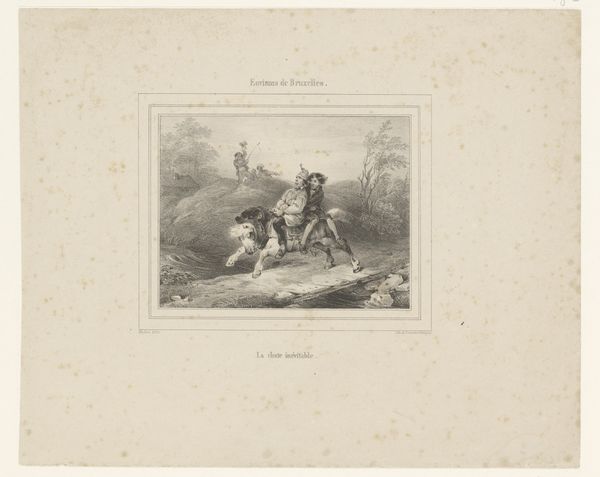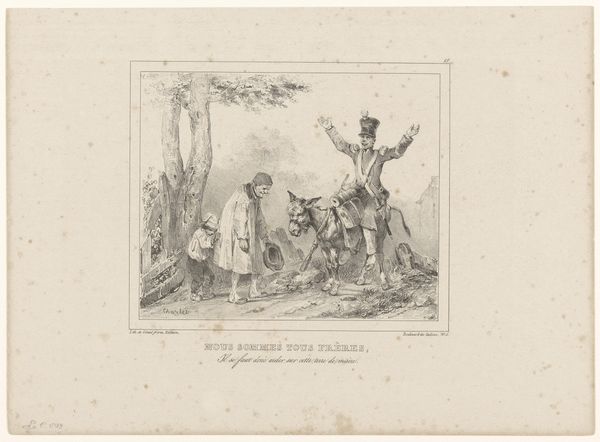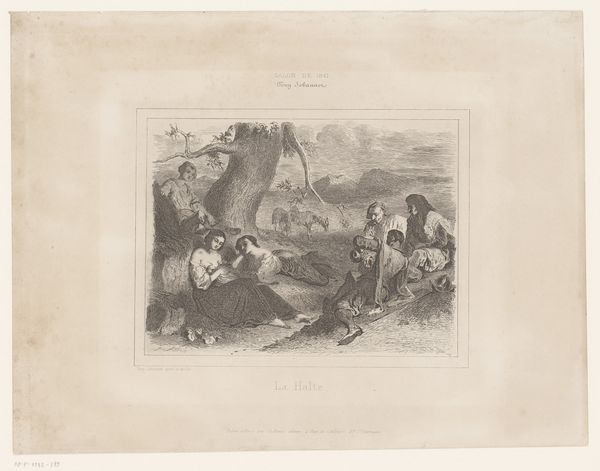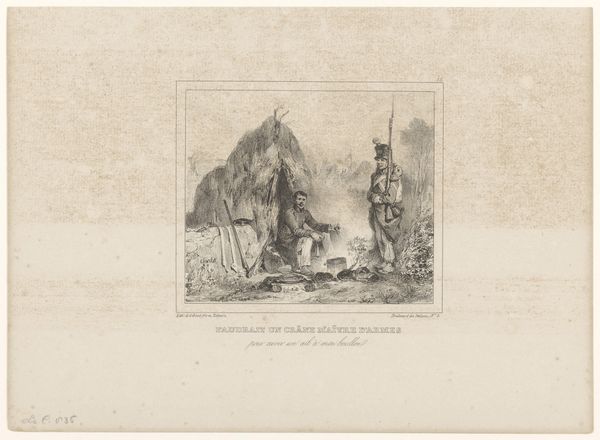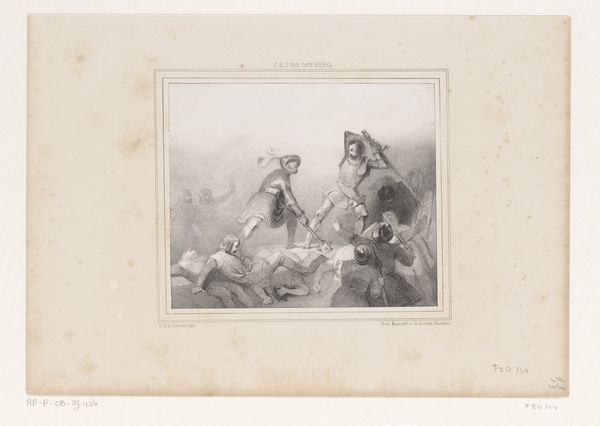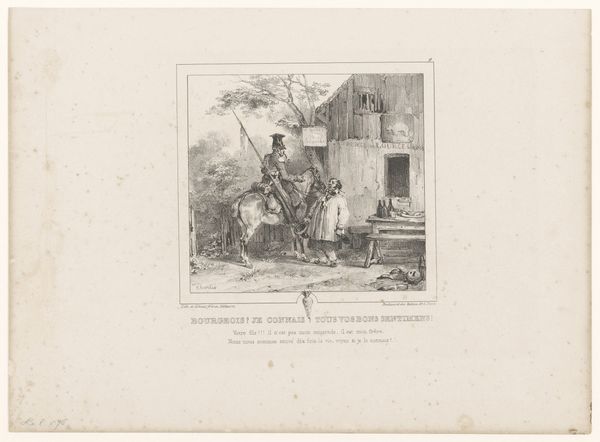
print, engraving
# print
#
light coloured
#
landscape
#
figuration
#
romanticism
#
genre-painting
#
engraving
Dimensions: height 274 mm, width 358 mm
Copyright: Rijks Museum: Open Domain
Curator: Before us is "Hunter Showing Another Hunter His Shot Hare" by François Grenier, created between 1831 and 1846. It is an engraving. What's your initial take? Editor: There’s something melancholic about it. It's not just a celebration of the hunt, it feels quite… somber, doesn’t it? It feels small scale. It's interesting how flat the landscape appears to be. It is a print and feels like a moment, not a place. Curator: I think that observation speaks to the complexities of Romanticism. This isn't about celebrating nature in an idealized way, but also reflecting on our place within it, and perhaps even questioning our dominion over the natural world, even critiquing labor itself, as seen with hunting. Think about who had the right and privilege to engage in hunting at that time. The hierarchy in their clothing says everything. Editor: Absolutely. Looking at the technique, it's interesting how the engraving allows for this incredible detail, almost like a snapshot, freezing the moment in time, to document that social order. Also consider that process. This piece can be reproduced almost limitlessly, and distributed almost everywhere, becoming an instrument to solidify or potentially critique dominant ideologies. Curator: It's not merely about the hunt, it's about the assertion of control, specifically within patriarchal structures, reflected in the hunters and even perhaps in the dejected demeanor of the child and dog in the scene, suggesting perhaps the cycle of socialization and exploitation that happens through hunting as well as how the landscape itself plays a part. Think about what laboring this land would entail. Editor: The landscape is definitely the linchpin for all these social and labor components. Its almost a kind of raw material in which they're all able to perform their functions in that context of 19th century hunting, and it reflects those functions by being very much just there, it is what they do things *in*. Curator: Right, and it's through this lens that the materiality of the print also gains meaning. This is not a painting, with claims of genius and creative ability; but the choice of a reproductive technology expands conversations around genre-painting, the production of art, and its purpose in wider society. Editor: That's an interesting point about artistic status too. By showing the landscape and showing the materials of hunting like this the artwork almost challenges traditional fine art conventions that would ignore a 'banal' moment like this for something considered a grander scene or moral lesson. Curator: It pushes the boundaries of our understanding, revealing art can reveal social systems. Editor: And reflect on its place in shaping it!
Comments
No comments
Be the first to comment and join the conversation on the ultimate creative platform.



